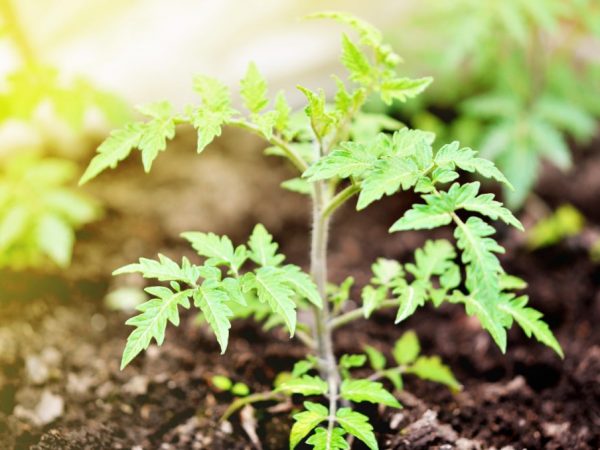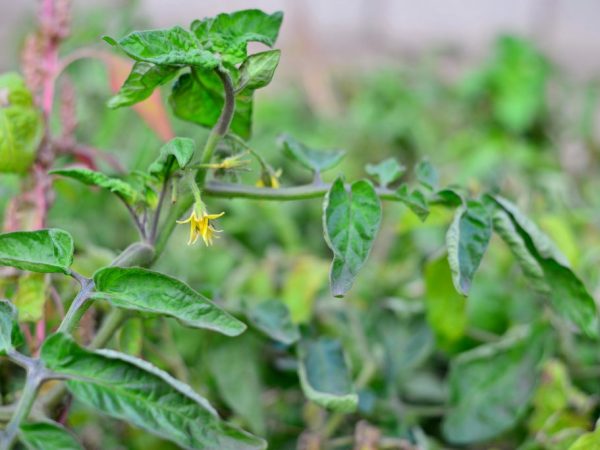The benefits of calcium chloride for tomatoes
Calcium chloride for tomatoes plays an important role. He helps them in their full development. It is impossible to get a good harvest without additional fertilizing with this substance. To give the plants the opportunity to grow normally, you need to correctly calculate the fertilizer concentration and feed the bushes in time.

The benefits of calcium chloride for tomatoes
What is calcium for?
Calcium chloride is essential for tomatoes during the growth and flowering period. It participates in photosynthesis and promotes the production of carbohydrates. Without it, the plant does not receive normal nutrition, it does not have enough strength to build up deciduous mass and bloom.
The need for a calcium supplement manifests itself even at the stage of seed germination. During this period, the sprouts develop due to the supply of nutrients in the seed itself, but as soon as these reserves are depleted, the seedlings are fed.
Tomatoes growing on acidic podzolic soils need calcium more than others. This substance reduces the negative effect of excess aluminum, manganese and iron in the soil. With a lack of such an element in the soil, the roots of the bush are the first to suffer. Their growth stops, root hairs begin to lose the ability to absorb moisture and nutrients dissolved in it. Even with normal watering, the bush withers and turns yellow.
Calcium deficiency symptoms
Lack of calcium chloride in tomatoes is primarily reflected in young shoots.
Growth points gradually die off, and the shoots themselves become thinner, become lethargic and drooping. If the deficiency occurs at the stage of fruit formation and ripening, brown dry spots may be observed on them.
Sometimes the symptoms of calcium deficiency are confused with the manifestations of late blight, but in this case, to eliminate the problem, it is enough to feed the bushes. The disease is more susceptible than others to cone-shaped tomatoes. Top rot quickly spreads to the entire fruit, making it unfit for human consumption. Affected tomatoes differ significantly from healthy ones. They are drier, no seeds are formed in them.
Symptoms of a missing item are:
- lethargy of leaves and tops of shoots;
- frequent breaks of branches;
- long ripening of fruits;
- lightening and curling of leaves.
How to fertilize
Fertilization of the soil with minerals is carried out during autumn or spring digging. The procedure is repeated every year, as the nutrient reserves of the soil are depleted.

The plant needs feeding
As a top dressing of tomatoes, the following is added to the soil:
- Dolomite flour. It consists of limestone ground into powder and may contain a small amount of impurities: clay and sand. It is also effective for neutralizing acidic soils. Its components are able to bind radionuclides, which makes it possible to grow an environmentally friendly vegetable. Dolomite flour is added to the soil at the rate of 500-600 g per 1 m², for highly acidified soils it will need 2 times more.
- Slaked lime is less commonly used for feeding tomatoes, but it is no less effective.The difficulty of its introduction lies in the fact that it can burn the roots and trunk of the bush in direct contact with it, therefore fertilizer is applied only in the fall in the amount of 500 g per m². On loam, the dosage is increased to 800 g.
- Chalk is introduced into the soil in a ground form. The fertilizer has a high calcium carbonate content. In spring or autumn, it is applied at about 300 g per m².
All these substances do not dissolve in water, and this must be taken into account when digging. Lumps are broken up with a shovel or rake to evenly distribute the fertilizer.
Calcium nitrate
Unlike other mineral dressings, tomatoes can be fertilized with calcium nitrate at any period of their growing season. Calcium nitrate dissolves well in water and is absorbed faster by plants.
The calcium variety of nitrate should not be introduced into the soil simultaneously with phosphorus and sulfur fertilizers: this negatively affects the metabolic processes in the plant and reduces the percentage of calcium nitrate consumption. Tillage is carried out for the first time at the stage of growing seedlings. This guarantees:
- normal development;
- increase in yield by 10-15%;
- resistance to temperature extremes and drought;
- higher resistance to various viruses and fungi;
- rich taste of tomatoes, as well as a good presentation.
For 20 g of calcium nitrate, take 100-120 g of sifted wood ash, 10 g of urea and 10 liters of water. With this solution, tomato seedlings are watered at the root, avoiding contact with the stems and leaves: this can cause burns.
Folk remedies
The lack of calcium can be replenished with folk remedies.
To do this, 200 g of wood ash is boiled in 3 liters of water with 30 g of crushed eggshell. Boil the mixture for at least an hour over very low heat. You do not need to top up the boiled liquid.
After cooling, the seedlings or adult plants are sprayed. Spraying should be done in dry weather, as rainfall will make spraying useless. To make the solution stick better to the leaves, you can add laundry soap to it.
You can fill the lack of calcium by spraying the bushes with serum. For this, 1 liter of whey is diluted in 10 liters of water. Plants can be sprayed early in the morning, before the heat of the day, or in the evening.
Conclusion
The lack of calcium chloride in the soil can be replenished with various solutions containing this substance, but the proportions and dosage must be observed precisely.
When buying seedlings, be sure to pay attention to the condition of the leaves. If they are light and curled, the plant grows in poor soil with a lack of calcium.


